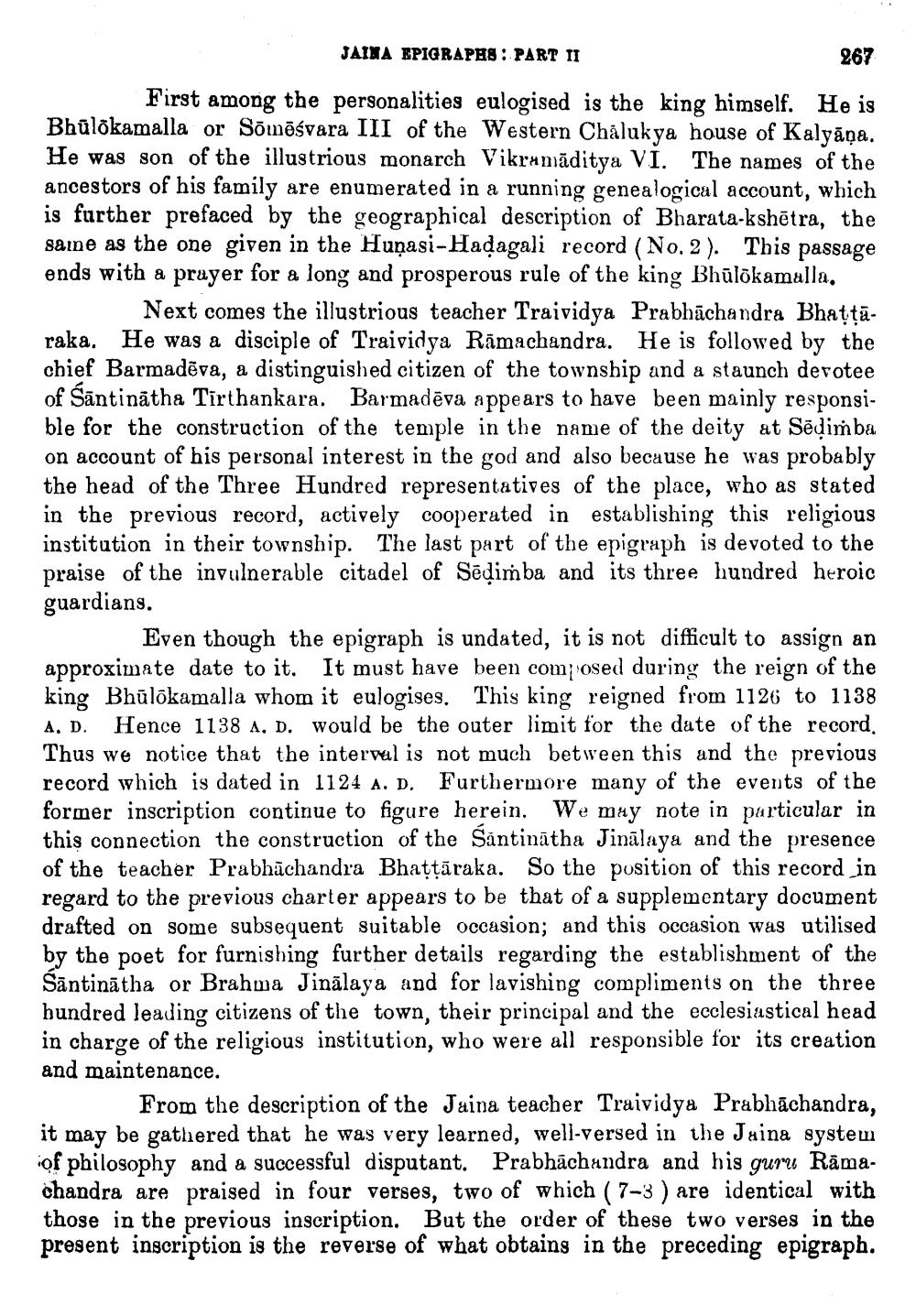________________
JAINA EPIGRAPHS: PART II
267 First among the personalities eulogised is the king himself. He is Bhūlókamalla or Sõmāśvara III of the Western Chalukya house of Kalyāņa. He was son of the illustrious monarch Vikrumāditya VI. The names of the ancestors of his family are enumerated in a running genealogical account, which is further prefaced by the geographical description of Bharata-kshētra, the saine as the one given in the Hunasi-Hadagali record (No.2). This passage ends with a prayer for a long and prosperous rule of the king Bhūlākamalla.
Next comes the illustrious teacher Traividya Prabhāchandra Bhattāraka. He was a disciple of Traividya Ramachandra. He is followed by the chief Barmadēva, a distinguished citizen of the township and a staunch devotee of Sāntinātha Tirthankara. Barmadēva appears to have been mainly responsible for the construction of the temple in the name of the deity at Sēdimba on account of his personal interest in the god and also because he was probably the head of the Three Hundred representatives of the place, who as stated in the previous record, actively cooperated in establishing this religious institution in their township. The last part of the epigraph is devoted to the praise of the invulnerable citadel of Sēļimba and its three hundred heroic guardians.
Even though the epigraph is undated, it is not difficult to assign an approximate date to it. It must have been composed during the reign of the king Bhūlõkamalla whom it eulogises. This king reigned from 1126 to 1138 A. D. Hence 1138 A. D. would be the outer limit for the date of the record. Thus we notice that the interval is not much between this and the previous record which is dated in 1124 A. D. Furthermore many of the events of the former inscription continue to figure herein. We may note in particular in this connection the construction of the Sảntinātha Jinālaya and the presence of the teacher Prabhāchandra Bhattāraka. So the position of this record in regard to the previous charter appears to be that of a supplementary document drafted on some subsequent suitable occasion; and this occasion was utilised by the poet for furnishing further details regarding the establishment of the Sāntinātha or Brahma Jinālaya and for lavishing compliments on the three hundred leading citizens of the town, their principal and the ecclesiastical head in charge of the religious institution, who were all responsible for its creation and maintenance.
From the description of the Jaina teacher Traividya Prabhāchandra, it may be gathered that he was very learned, well-versed in the Juina system of philosophy and a successful disputant. Prabhāchandra and his guru Rāmachandra are praised in four verses, two of which ( 743 ) are identical with those in the previous inscription. But the order of these two verses in the present inscription is the reverse of what obtains in the preceding epigraph.




